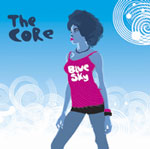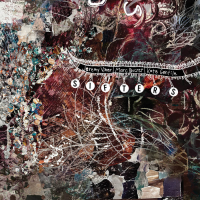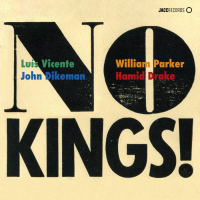Home » Jazz Articles » Multiple Reviews » New Exit From Brooklyn: Chris Speed's Skirl Records
New Exit From Brooklyn: Chris Speed's Skirl Records
The first three releases embody a diverse cross-section of creative improvised music's broad aesthetic reach, with the recently released fourth title further expanding the label's inclusiveness. Presenting the discs in DVD-sized digipacks, the label aspires to separate itself from the run of the mill, both in its music and packaging.
The label's debut, The Clarinets, features an improvising chamber trio consisting of clarinetists Chris Speed, Oscar Noriega and Anthony Burr. Skirl's sophomore effort, My Ears Are Bent, highlights accordionist Ted Reichman's instrumental rock trio. Trombonist Curtis Hasselbring's debut of his eclectic group, the eponymously titled The New Mellow Edwards, is the final installment of the label's initial salvo.
Recently released, Meg Nem Sa is the label's fourth title, and the thematic follow-up album to the self-titled 2002 Songlines debut of guitarist Hilmar Jensson's electric power trio, TYFT. With more projects on the horizon, forthcoming albums include an Oscar Noriega disc and the return of Human Feel.
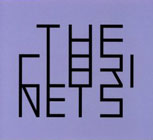 Chris Speed, Oscar Noriega, Anthony Burr
Chris Speed, Oscar Noriega, Anthony Burr
The Clarinets
Skirl
2006
Evocative and serene, The Clarinets is the most subdued item in the Skirl catalog thus far. Less a "jazz" trio than an improvising new music collective, this group of long-term associates offers a program of spontaneous composition that truly defines the over-hyped term. Democratic and balanced, the three principals are careful not individually to dominate the proceedings. Chris Speed, Oscar Noriega and Anthony Burr contribute equally: there is no leader in this trio.
A program of improvised contemporary chamber music full of timbral shading, pitch explorations and nuanced dynamics, the music is refreshing in its restraint. Veering from atmospheric dirges to periodic bursts of feverish energy, this trio explores uncharted territory.
Recorded in an old church in upstate New York, the album is awash in sonic resonance and pastoral ambience. The woody timbre of the clarinets blends in with the surrounding environment for a rich and sublime listening experience.
While plying supple glisses and long tones in polytonal harmony, they emulate ghostly, sustained electronic feedback with acoustic instruments on "Televiewers." Sparring back and forth during segments of turbulent discourse on the aptly titled "Accord," they recall the more assertive moments of such flagship groups as New Winds or Rova. Flirting with neo-classical expressionism, they unfurl buoyant trills and arpeggios with baroque discipline on the joyous "Scrawl."
Forsaking traditional swing or short, simple melodies, The Clarinets inhabits an Elysian no-man's land situated between the jazz and classical worlds.
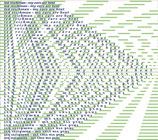
> Ted Reichman
My Ears Are Bent
Skirl
2006
Although he began his career as Anthony Braxton's accordion player at age nineteen, Ted Reichman's original studies were on piano. On My Ears Are Bent, he revisits the instrument with the help of long-time collaborator, imaginative percussionist John Hollenbeck and up and coming guitarist Mary Halvorson. Eschewing the accordion entirely, Reichman focuses his energies on the piano, spinning a cinematic web that veers from euphonious minimalism to darker, melancholy fare.
Reichman's compositions borrow standard pop song formulas, extrapolating their repeated phrases and linear themes into somber dirges, rousing beat driven work-outs or driving anthems. The trio augments bittersweet drones, tuneful chord progressions and impressionistic piano arpeggios with spectral electronic noise and skittering free-form interjections, intensifying the album's dramatic scope.
Structured like a suite, the album implies narrative through a combination of illustrative song titles and contrasting tonalities. The optimistic opener "Every Man To His Own Taste," mirrors the closing title track in ebullient energy and ascending opulence. The core of the record, however, conjures the fertile Catholic imagery embodied in song titles such as "Peace Father," "Nun" and "Come To Jesus." The album's dark, minor-key center is full of shadowy glimpses and dissonant whispers. Reichman expels cascades of twisted notes, sympathetically supported by Hollenbeck's percussive asides and Halvorson's unconventional sonic alchemy.
On the closing title track, the trio blends abstract virtuosity with an uplifting, sanguine melody that washes away the tension and darkness of the previous selections. Trafficking in a hybrid of instrumental rock (or post-rock, if you prefer), the trio draws a direct line from adventurous indie rock favorites like Tortoise and Yo La Tengo to pop savvy jazz artists like The Bad Plus.
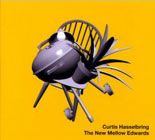
> Curtis Hasselbring
The New Mellow Edwards
Skirl
2006
The most eclectic release of the bunch, The New Mellow Edwards is an expansive affair. The debut album from trombonist Curtis Hasselbring's self-titled quartet embraces rock music, free improvisation and jazz structures, flirting with everything from Latin rhythms to electronica.
Joined by percussionist John Hollenbeck, bassist Trevor Dunn and multi-instrumentalist Chris Speed, The New Mellow Edwards is a summit meeting of new talent. With a collaborative resume ranging from Meredith Monk and Tim Berne to Fantomas and the Melvins, Hasselbring's associates demonstrate the sort of chutzpah needed to thrive in this irreverent and lively ensemble. Embracing collective ideology, Hasselbring allots copious space for the quartet members to shine on these atypical pieces.
An accomplished sideman for the last two decades, with credits ranging from the Ken Schaphorst Big bang and Either Orchestra to Frank London and Satoko Fujii, Hasselbring draws from his varied experiences to color this quixotic set.
Whether deconstructing garage-inflected surf rock on the infectious "The Infinite Infiniteness Of Infinity" or dabbling in electronic beats on "ABCs Of The Future," Hasselbring brings a sense of cohesion and thematic consistency to a mix of genres and styles that would normally sound at odds. The trombonist's writing is unconventional, but accessible, as the odd, fluctuating time signatures and manic energy of "Double Negative" attest to. Similarly, "Far-Away Planet" transforms from atmospheric electronics into a bright, rocking excursion that grows in rapturous collective intensity. With an ear for tuneful song craft, Hasselbring arranges the Pixies' "Ana" as a brief miniature and runs through an energetic cover of "Mamacita" with zeal.
Bounding along fitfully with jubilant energy, or drifting into scrawling, experimental textures, The New Mellow Edwards embody the best new music Brooklyn has to offer.
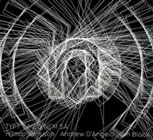 TYFT
TYFT
Meg Nem Sa
Skirl
2006
Icelandic guitarist Hilmar Jensson's power trio TYFT opens their Skirl Records debut, Meg Nem Sa, with the audaciously punning "Led Tyftelin." The trio combines the dark, minor-key aggression of metal and punk with the raucous energy of free jazz.
TYFT contributes a new wrinkle to the passé fusion genre with odd time signatures, heavy funk grooves, rock solid beats, angular melodies and intricate pre-written sections. Whether navigating tricky unison passages or dissonant free-form breakdowns, Jensson and multi-instrumentalist Andrew D'Angelo play with verve and assurance. Driven by the monolithic back beats of Jim Black, the trio is a post-modern chimera, drawing inspiration from a mix of contemporary genres and styles.
A thoroughly modern guitarist, Jensson employs an array of electronic effects, augmenting distortion with octave doubling, phase shifting and myriad other exotic textures. D'Angelo spins circuitous lines with ease, but favors the sort of altissimo skronk of which John Zorn or Briggan Krauss would approve. One of today's finest drummers, Jim Black's subtle variations and inventive contributions to these rollicking rhythms elevate the trio's excursions beyond post-modern dilettantism.
TYFT emulate their indie rock brethren with sincerity and knowing invention on such invigorating fare as "Ain't No Waltz," "Hilsner" and the title track. Confounding expectations, the album concludes with a selection of ethereal tunes that are as tender and delicate as the preceding excursions are brash and severe.
Indicative of a close-knit scene, playing together in various groups under numerous banners, these musicians share a symbiotic aesthetic outlook. Along with Chris Speed's Yeah No and Jim Black's Alasnoaxis, Hilmar Jensson's TYFT carves its own niche out in the fertile space between rock and jazz.
Tracks and Personnel
The Clarinets
Tracks: Constellating; Languor; Accord; Televiewers; Scrawl; Mockingbird; Negatives; Lovescar
Personnel: Oscar Noriega: bass clarinet, clarinet; Anthony Burr: bass clarinet; Chris Speed: clarinet.
My Ears Are Bent
Tracks: Every Man To His Own Taste; Peace Father; I Know Nothing About It; Nun; It Is Almost Sacred; Come To Jesus; My Ears Are Bent.
Personnel: Ted Reichman: piano, electronics, guitar, bass, percussion, pump organ; Mary Halvorson: electric guitar; John Hollenbeck: drums.
The New Mellow Edwards
Tracks: White Sauce Hot Sauce Boss?; The Infinite Infiniteness Of Infinity; ABCs Of The Future; Plubis Epilogue; Double Negative; (I'm The Annoying Guy Who Always Yells) Freebird; Insaniterrier (The Radio Dog); Scatology; Ana; Far-Away Planet; Mamacita.
Personnel: Curtis Hasselbring: trombone, Cracklebox, Megamouth, Casios, odd sounds; Chris Speed: clarinet, tenor saxophone, Casio SK1; Trevor Dunn: acoustic bass, bow; John Hollenbeck: drums, percussion, melodica.
Meg Nem Sa
Tracks: Led Tyftelin; Shooshabuster; International Four; Ain't No Waltz; Tumble Bugs; Meg Nem Sa; Okkar; Ouch; Flutter; Hilsner; Bloq; Sezt Nidur; Amena.
Personnel: Hilmar Jensson: guitars; Andrew D'Angelo: alto saxophone, bass clarinet, electronics; Jim Black: drums, electronics.
Tags
PREVIOUS / NEXT
Various Artists Concerts
Support All About Jazz
 All About Jazz has been a pillar of jazz since 1995, championing it as an art form and, more importantly, supporting the musicians who make it. Our enduring commitment has made "AAJ" one of the most culturally important websites of its kind, read by hundreds of thousands of fans, musicians and industry figures every month.
All About Jazz has been a pillar of jazz since 1995, championing it as an art form and, more importantly, supporting the musicians who make it. Our enduring commitment has made "AAJ" one of the most culturally important websites of its kind, read by hundreds of thousands of fans, musicians and industry figures every month.



